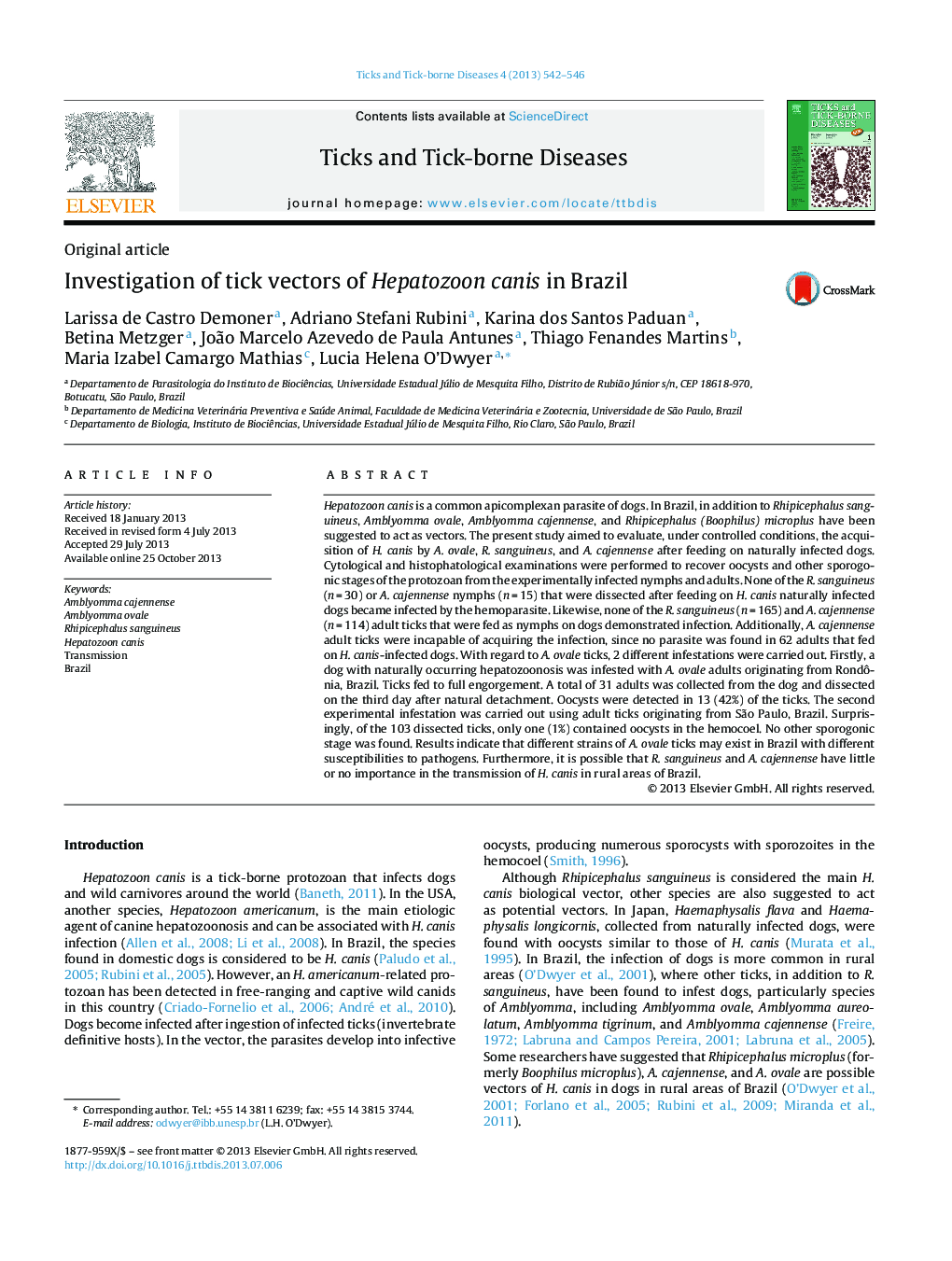| کد مقاله | کد نشریه | سال انتشار | مقاله انگلیسی | نسخه تمام متن |
|---|---|---|---|---|
| 2474148 | 1113117 | 2013 | 5 صفحه PDF | دانلود رایگان |

Hepatozoon canis is a common apicomplexan parasite of dogs. In Brazil, in addition to Rhipicephalus sanguineus, Amblyomma ovale, Amblyomma cajennense, and Rhipicephalus (Boophilus) microplus have been suggested to act as vectors. The present study aimed to evaluate, under controlled conditions, the acquisition of H. canis by A. ovale, R. sanguineus, and A. cajennense after feeding on naturally infected dogs. Cytological and histophatological examinations were performed to recover oocysts and other sporogonic stages of the protozoan from the experimentally infected nymphs and adults. None of the R. sanguineus (n = 30) or A. cajennense nymphs (n = 15) that were dissected after feeding on H. canis naturally infected dogs became infected by the hemoparasite. Likewise, none of the R. sanguineus (n = 165) and A. cajennense (n = 114) adult ticks that were fed as nymphs on dogs demonstrated infection. Additionally, A. cajennense adult ticks were incapable of acquiring the infection, since no parasite was found in 62 adults that fed on H. canis-infected dogs. With regard to A. ovale ticks, 2 different infestations were carried out. Firstly, a dog with naturally occurring hepatozoonosis was infested with A. ovale adults originating from Rondônia, Brazil. Ticks fed to full engorgement. A total of 31 adults was collected from the dog and dissected on the third day after natural detachment. Oocysts were detected in 13 (42%) of the ticks. The second experimental infestation was carried out using adult ticks originating from São Paulo, Brazil. Surprisingly, of the 103 dissected ticks, only one (1%) contained oocysts in the hemocoel. No other sporogonic stage was found. Results indicate that different strains of A. ovale ticks may exist in Brazil with different susceptibilities to pathogens. Furthermore, it is possible that R. sanguineus and A. cajennense have little or no importance in the transmission of H. canis in rural areas of Brazil.
Journal: Ticks and Tick-borne Diseases - Volume 4, Issue 6, December 2013, Pages 542–546